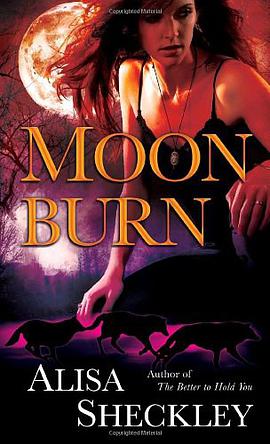
From Scientific American
When the late evolutionist and polymath Stephen Jay Gould was a toddler, he became fascinated and terrified by the towering Tyrannosaurus rex skeleton at the American Museum of Natural History. Gould later claimed to have been instantly "imprinted" on the monstrous saurian, like a duckling on its mama. The little boy decided on the spot to become a paleontologist--years before he even learned the word. In John Brockman's Curious Minds: How a Child Becomes a Scientist, a collection of 27 autobiographical essays by leading savants, Harvard psychologist Steven Pinker scoffs at this oft-told story. Pinker relates that Gould dedicated his first book: "For my father, who took me to see the Tyrannosaurus when I was five," and admires Gould's "genius ... for coming up with that charming line." But he doesn't buy it. Pinker goes on to tell his own childhood story, with the caveat that long-term memory is notoriously malleable and that we often concoct retrospective scenarios to fit satisfying scripts of our lives. So don't believe anything in this book, he warns, including his own self-constructed mythology; many children are exposed to books and museums, but few become scientists. Pinker concludes that perhaps the essence of who we are from birth shapes our childhood experiences rather than the other way around. Nevertheless, when Brockman asked Pinker and others to trace the roots of their adult obsessions for this book, he received some unexpected and entertaining responses. Primatologist Robert Sapolsky, for example, haunted the Bronx Zoo and the natural history museum, as Gould did, but fell in love with living primates rather than fossil bones. He didn't want to just study mountain gorillas, he recalls of his childhood crush on monkeys and apes, "I wanted to be one." For the past few decades, Sapolsky has spent half of each year in his physiology lab and the other half among wild baboon troops in East Africa. Some people, such as theoretical psychologist Nicholas Humphrey, are simply born into science. His grandfather, Nobel laureate A. V. Hill, often took him along to the physiology lab. Grandfather Hill--quoting his friend Ivan Pavlov--taught young Nicholas that "facts are the air of a scientist. Without them you can never fly." Among frequent visitors to the family home were his great-uncles Maynard and Geoffrey Keynes, members of British science's aristocracy, as well as his great-aunt Margaret, a granddaughter of Charles Darwin. He recalls how their long-term houseguest, an adolescent, "bossy" Stephen Hawking, once marched up and down the hallways clutching a military swagger stick, barking at a "platoon of hapless classmates." Science was Humphrey's birthright. Richard (The Selfish Gene) Dawkins, one of England's preeminent Darwinians, admits that he never cared for science or the natural world during his early years. He was inspired, however, by the fanciful children's books about Dr. Dolittle by Hugh Lofting. The good doctor was a Victorian gentleman who held intelligent conversations with mice and parrots and whales. An adventurous sort, he traveled the world to learn the secrets of faraway places. When the adult Dawkins encountered the life and works of Charles Darwin, he welcomed him as an old friend and hero of his youth. Dolittle and Darwin, he opines, "would have been soul brothers." Lynn Margulis's early interest in the wonders of the microscopic world began when she was a "boy crazy" adolescent, who was amazed to learn that some minuscule creatures never need sex in order to reproduce. Enter a teenage heartthrob: the budding astrophysicist Carl Sagan. ("Tall, handsome in a sort of galooty way, with a shock of brown-black hair, he captivated me.") She was 16 when they met; eventually they married. Sagan's fascination with "billions and billions" of cosmic bodies resonated with her own fixation on the billions of microcosms to be observed through the microscope. Margulis's study subjects have included a tiny animal in a termite's gut that is made up of five distinct genomes cobbled together. She has argued that we and other animals are composite critters, whose every cell harbors long-ago invaders--minute symbiotic organisms that became part of our makeup. Her innovative approach to evolution has profoundly influenced biology. Harvard psychologist and neurologist Howard Gardner says his youth was notable for its lack of any clues indicating a future in science: "I did not go around gathering flowers, studying bugs, or dissecting mice ... I neither assembled radios nor tore apart cars." Yet, for others, there was a decisive turning point. And some could clearly remember it. I was fortunate in having been a childhood friend of Steve Gould's and can vouch for the sincerity o f his conviction that his extraordinary career as a paleontologist, historian of science and evolutionary theorist began when that T. rex followed him into his nightmares. Once, during our junior high school days, I stood with him beneath that iconic carnosaur in the museum, observing his reverence and awe on revisiting the shrine of his inspiration. Professor Pinker, of course, is free to believe that I'm making this up for my own psychological reasons.
具体描述
读后感
评分
评分
评分
评分
用户评价
相关图书
本站所有内容均为互联网搜索引擎提供的公开搜索信息,本站不存储任何数据与内容,任何内容与数据均与本站无关,如有需要请联系相关搜索引擎包括但不限于百度,google,bing,sogou 等
© 2025 qciss.net All Rights Reserved. 小哈图书下载中心 版权所有





















